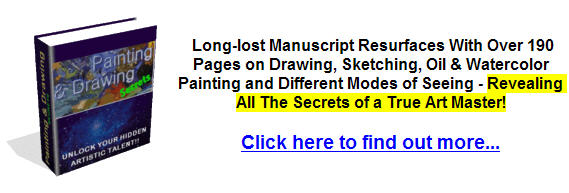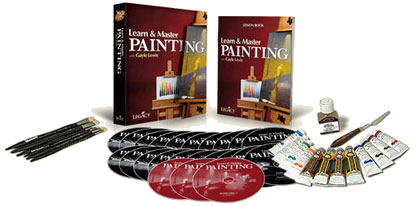Learn How to Compose Your Painting
A painting's composition is a very important factor for artists to convery their creative ideas to audiences. Good composition of a painting might not stand out well at first and have an appealing feel to it. However, if a painting is badly composed, it instantly stands out like a sore thumb. The composition of the painting is what the audience sees and feels when they first connect with a piece of art. So, what are examples of bad composition? Think of this as an object that is squeezed into a corner or perhaps just smacked right in the centre of the frame. To help painters gain a better feel for composition, here are a few tips that you should implement when creating a new painting. Focal Point As the name suggests, the focal point needs to draw the attention of the viewer to it immediately. You should place the main subject of your painting in prominent places where the the viewer's eye is drawn. One example of placing the focal point is at the intersection grids from Rule of the Thirds. On top of that, you could also use objects such as stairways, pavements, roads that lead to a building to help acheive this effect. You should start of with a sketch of your painting in 3 values, namely: white, black and grey. Next, check how much of each value you had used. Typically, the guideline is to get them in different amounts and not in similar portions. For example, 60% black, 35% white and 5% grey. Do a thumbnail sketch of your painting's composition in just three values: white (light), black (dark), and grey (mid-tone). This will help your painting to convery its subjects easier. Spacing of Elements Sometimes, being untidy and disorderly is necessary in painting different subjects. For example, if you are painting a landscape of a forest, do not line up the trees in orderly manners as this is unnatural. Other times, you might want to keep orderliness when painting landscapes such as padi fields. You could also vary the angles in which they lie and play around with different sizes of the subjects. Variety in Painting Very often, you may get stuck in a rut and reuse the same composition all the time. This may get boring after a while. A good way to break out of the creative box is to vary different elements such as horizon line placement, changing the location of the focal point or even painting portraits instead of a landscape painting. Amazing Painting Lessons: Learn & Master Painting | |
|


Master the Colours DVD...

|
Although every attempt has been made to make information as accurate as possible, we are not responsible for any errors that may appear.
© Copyright 2015, OilPaintingTechniquesLessons.com. All Rights Reserved.





